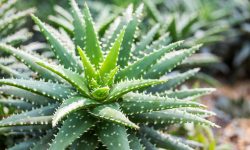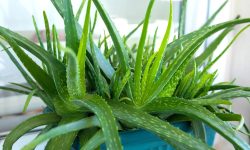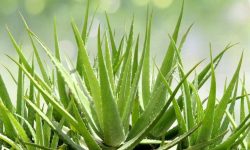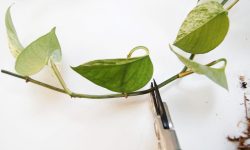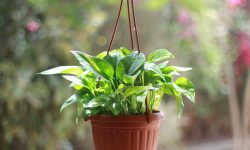Aloe vera is one of the most versatile healing plants, yet many people never learn how to harvest it correctly. Cutting the leaves the right way protects the plant, preserves its strength, and gives you the freshest gel possible. When harvested with care, aloe produces rich, clear gel that feels cool, soothing, and deeply hydrating. This gel can support skin recovery, calm irritation, or enhance homemade remedies. Learning how to harvest aloe safely helps you enjoy the plant’s full benefits without weakening its growth. A careful approach ensures each leaf gives the highest quality gel.
Harvesting aloe vera also becomes more rewarding when you understand how the plant responds to each cut. Aloe heals quickly when handled gently, and proper techniques help it stay strong for years. Healthy harvesting allows the plant to keep producing large, firm leaves filled with fresh gel. With the right method, you never harm the core of the plant or disrupt its natural rhythm. Instead, you work with its growth cycle to collect pure gel whenever you need it. Understanding these simple steps transforms harvesting from guesswork into a reliable routine that keeps both you and your aloe thriving.
Understanding Aloe Vera Leaf Structure Before Harvesting

Aloe vera leaves hold water, nutrients, and healing compounds inside their thick gel core. Each leaf grows from the center of the plant and expands outward as it matures. The lower leaves develop first, so they contain more gel and stronger internal layers. These mature leaves offer the highest quality gel for harvesting. The upper leaves stay young and continue forming new tissue, so you should protect them. By understanding this growth pattern, you can choose the right leaves without harming the plant.
The base of each leaf connects directly to the central stem. This area controls new leaf formation and remains sensitive to damage. When you cut too close to the center, the plant struggles to create new leaves. This damage also slows overall growth. You should cut mature leaves near the outer edges instead. This approach protects the plant’s core and allows new leaves to grow normally. Healthy harvesting supports long-term strength and keeps the plant productive.
The inside of each leaf contains clear gel, but a thin layer of yellow latex sits beneath the skin. This latex tastes bitter and may irritate sensitive skin. You should remove it carefully during preparation. The clear gel rests deeper inside, so proper trimming helps you separate it cleanly. Mature leaves contain more gel and make this process easier. When you understand these inner layers, you can collect cleaner gel with less effort. This awareness also helps you avoid unwanted substances. A good understanding of the leaf structure gives you confidence and keeps both you and your plant safe during every harvest.
Choosing the Right Leaves to Harvest for Maximum Gel Quality
Choosing the right leaves determines how much gel you collect and how well your aloe vera continues to grow. Mature leaves always give the highest quality gel because they have stored nutrients for a longer time. These leaves grow along the outer ring of the plant and feel thicker when touched. Their shape looks fuller, and their color appears deeper. When you choose these mature leaves, you protect the young growth in the center. The central leaves guide future development, so they must stay untouched. Selecting the right leaves keeps the plant stable and productive.
Healthy leaves also show clear signs of readiness. A mature aloe leaf stands firm, holds steady weight, and responds with slight resistance when pressed. Dry or damaged leaves contain less gel, so they do not make good choices. You should always avoid leaves that show bruising, soft patches, or discoloration. These issues may signal stress or internal damage. A strong leaf will give clean gel that looks bright and clear. Healthy leaves also heal faster after removal because the plant can seal the cut more easily. This helps the aloe stay strong even when you harvest often.
Size also matters when choosing leaves. Larger leaves offer more gel, which gives you more options for preparing remedies or skincare mixtures. You can identify the largest leaves by observing the base of the plant. These lower leaves often extend farther outward and feel firm from tip to base. When you select the largest mature leaves, you reduce the number of cuts the plant must heal. This sparks quicker recovery and protects the plant’s long-term health. Choosing the right leaves supports both high gel quality and consistent future growth.
Preparing the Plant Before Harvesting for Safe and Clean Gel Collection
Preparing your aloe vera plant before harvesting helps you collect cleaner gel and protect the plant from stress. You should begin by checking the overall health of the plant. A healthy aloe shows firm leaves, strong color, and steady growth from the center. When the plant looks stable, it handles harvesting more easily. If the leaves appear weak or pale, you should wait until the plant regains strength. Healthy plants seal cuts faster and continue producing new leaves without slowing down. Preparation ensures the plant remains strong after every harvest.
You should also clean the leaves before cutting. Dust, pollen, and tiny debris often settle on aloe leaves over time. These particles may contaminate the gel if they fall onto the cut surface. Wiping the leaf with a damp cloth creates a clean working area. This simple step also allows you to inspect the leaf more closely. You can spot any cracks, soft spots, or signs of insect activity. When the leaf looks clean and smooth, you can harvest gel more safely. Clean leaves always produce better-quality gel.
Time of day also matters during preparation. Harvesting in the morning helps you collect gel when the plant feels hydrated and firm. Cooler morning temperatures protect the leaf from heat stress and make cutting easier. You should also avoid watering the plant right before harvesting. Extra moisture pressures the leaf and reduces gel density. Waiting a few days after watering helps the gel become thicker and clearer. These small preparation steps create a smoother harvesting routine. Proper preparation protects the plant and improves the purity of the gel you collect.
Understanding When Your Aloe Vera Is Ready for Harvesting
Knowing when your aloe vera is ready for harvesting helps you collect the richest gel without harming the plant. The best time to harvest comes when the leaves reach full thickness and show strong color. Mature leaves feel firm from base to tip and hold steady weight when lifted. These signs confirm that the plant has stored enough gel for meaningful use. Younger leaves near the center still develop their internal structure, so you should leave them untouched. Observing the plant closely gives you a clear sense of timing.
Seasonal growth also plays an important role. Aloe vera grows faster during warm months when light stays strong and temperatures rise. During these periods, the leaves gather more moisture and nutrients. This natural cycle increases gel content and improves texture. When you harvest during active growth, the plant recovers quickly and continues producing new leaves. Cold seasons slow leaf expansion, so harvesting during winter may give you less gel. Waiting for warmer periods helps you collect the thickest and cleanest gel possible.
Leaf appearance offers additional clues. Ready-to-harvest leaves curve gently outward and create a balanced shape around the base of the plant. These leaves show fewer wrinkles and stand firm even when lightly pressed. Their tips remain smooth and free from dryness. A healthy plant produces several mature leaves at the same time, so you can harvest without stressing the whole structure. When you wait for the right moment, the plant stays strong, and the harvested gel reaches its highest healing potential. Understanding timing adds confidence and consistency to every harvest.
How to Cut Aloe Vera Leaves Safely for Clean and Efficient Harvesting
Cutting aloe vera leaves safely begins with choosing the right setup. You should always use a sharp, clean knife to ensure a smooth cut. A dull blade creates uneven edges and forces the plant to use more energy to heal. A sharp blade also helps you protect the gel inside the leaf by preventing crushing. Cleaning your knife with warm water or alcohol removes dust and bacteria. This simple step keeps the plant healthier and prevents contamination. Once everything is clean, you can focus entirely on cutting the leaf with steady hands and clear control.
You should locate the leaf that offers the best gel before making any cut. Mature leaves around the outer ring contain the most gel and handle cutting better. Hold the leaf gently and support it near the base. Slide your blade close to the leaf’s attachment point without touching the central stem. This stem controls all new growth, so it must remain safe. Make one firm, smooth cut instead of slow sawing motions. A clean cut reduces stress and protects the surrounding tissues. When you cut the leaf cleanly, the plant seals the wound faster and maintains strong overall growth.
After removing the leaf, preparation continues on a clean surface. You should place the leaf upright or at a slight angle to allow the yellow latex to drain. This latex has a strong smell and may irritate the skin, so letting it drain ensures cleaner gel. Once drained, you can trim the sharp sides and open the leaf lengthwise. This exposes the gel in thick, even layers. You can scoop the gel easily when the leaf stays intact. Clean cutting also gives you more usable gel because the leaf holds its shape. Safe cutting protects your aloe vera and helps you harvest the purest gel every time.
Extracting the Gel Properly for Maximum Freshness and Purity
Extracting aloe vera gel correctly helps you collect the cleanest and most effective product. You should begin by placing the harvested leaf on a clean surface. The leaf must feel firm and fully drained of yellow latex before you open it. Once it looks ready, trim the sharp edges along both sides. These edges contain thin layers of latex, so removing them improves gel quality. After trimming, slice the leaf lengthwise to expose the gel. Work slowly to avoid pressing too hard because pressure mixes latex into the gel. A gentle touch keeps the gel clear and fresh.
When the leaf lies open, you can scoop the gel using a spoon or clean fingers. You should lift the gel in smooth sections and avoid scraping the outer skin. Scraping pulls unwanted fibers into the gel and reduces its purity. Clear gel feels soft and thick, so you can separate it easily. If you see any yellow tint, you should remove that part because it contains latex. Keeping the gel free of latex helps protect your skin and ensures a mild, soothing effect. Pure gel works best for skincare, hair care, and homemade remedies.
After collecting the gel, you can use it immediately or store it for later. Fresh gel stays most effective when used within a few hours, but you can refrigerate it for short-term storage. Cold temperatures help maintain the gel’s texture and natural compounds. Placing the gel in a sealed container prevents air exposure and protects it from drying out. If you want longer storage, you can mix the gel with a small amount of vitamin C or vitamin E. These ingredients slow oxidation and help the gel last longer. Proper extraction supports pure results and keeps your aloe harvest meaningful and safe to use.
Storing Aloe Vera Gel Correctly to Preserve Its Healing Benefits
Storing aloe vera gel the right way helps you keep its healing power for as long as possible. Fresh gel begins to lose nutrients when exposed to air, heat, or light, so proper storage protects its quality. You should always transfer the gel into a clean, dry container right after extraction. A glass jar works well because it keeps the gel cool and stable. Plastic containers may react with the gel over time, so glass offers better protection. Keeping the container sealed prevents air from entering and slows the breakdown of important compounds. Good storage habits maintain the gel’s soothing, cooling properties.
Refrigeration creates the best environment for short-term storage. Cold temperatures keep the gel firm and delay natural oxidation. Aloe gel usually stays fresh for one week in the refrigerator if sealed tightly. You should store it toward the back of the fridge where the temperature stays steady. Opening the container too often allows warm air to enter, so only open it when needed. If the gel changes color or develops an unusual smell, you should discard it. Proper temperature control keeps the gel safe and effective for skincare, hair treatments, and first-aid uses.
If you want longer storage, you can mix the gel with antioxidants. Vitamin C and vitamin E help stabilize the gel and extend its shelf life. These ingredients also add extra skin benefits, making the mixture even more useful. Blending the gel until smooth helps the mixture stay uniform in texture. Once blended, store it in a sealed glass container and refrigerate it. Some people also freeze aloe gel in small portions. Freezing maintains freshness for months and gives you ready-to-use cubes. Every approach depends on your needs, but all require clean tools and sealed containers. Correct storage keeps aloe vera gel fresh, safe, and ready whenever you need it.
Helping the Plant Heal After Harvesting for Continuous Leaf Production
Helping your aloe vera recover after harvesting ensures the plant stays strong and continues producing healthy leaves. After removing a leaf, you should inspect the cut area. A clean cut heals faster, so make sure the surface looks smooth and dry. The plant seals the wound naturally, but it needs time and stability to do this well. You should keep the plant in bright, indirect light so it can rebuild energy without facing stress. Avoid intense sunlight during the first few days because strong heat dries the cut too quickly. Gentle conditions help the plant recover at a steady pace.
Watering also needs special attention after harvesting. You should avoid watering immediately because moisture can slow the healing process. The plant needs dry conditions so the cut forms a protective layer. Waiting three to five days before watering helps the plant seal the wound safely. When you water again, keep it light and allow the soil to dry afterward. This balanced approach supports healthy roots and allows the plant to return to its natural rhythm. Stable soil conditions encourage new leaves to form and maintain strong internal structure.
You should also avoid repotting or moving the plant right after harvesting. The plant needs calm surroundings to adjust and rebuild strength. Disturbing the roots or changing the environment too soon may slow healing. Once the cut area looks firm and dry, the plant can resume normal growth. As new leaves appear in the center, the aloe prepares for future harvests. Observing the plant’s response helps you understand its healing pattern. Supporting the plant after each harvest ensures steady growth, stronger leaves, and a reliable supply of fresh gel for years.
How to Use Fresh Aloe Vera Gel Correctly for Best Results
Using fresh aloe vera gel correctly helps you enjoy its full healing benefits. The gel works best when applied soon after extraction because its natural compounds stay strong and active. You should test a small amount on your skin before using it widely. This test helps ensure your skin accepts the gel comfortably. Once confirmed, you can apply it to dry areas to soothe irritation or calm redness. Fresh gel absorbs quickly and leaves a cool, clean feeling. This immediate effect makes aloe a favorite for daily care.
You can also use the gel for hair treatments. Fresh aloe softens dry strands and supports a cleaner scalp environment. You can massage the gel into the scalp and leave it for a short period before rinsing. The texture helps nourish the roots and balance natural oils. Aloe’s gentle nature works well for sensitive skin and adds lightweight moisture. Regular use improves texture and creates a smoother, healthier feel. This natural treatment supports shine and reduces dryness.
For minor burns or insect bites, fresh gel provides quick comfort. You can apply a thin layer to the affected area and allow it to dry naturally. The gel forms a protective coating that cools the skin. This coating helps reduce discomfort and supports natural recovery. Using fresh gel consistently enhances the results because the plant’s compounds have not degraded. Fresh gel always performs better than old or stored gel. When you use aloe correctly, you receive soothing effects and deeper nourishment from each harvest.
Common Mistakes to Avoid When Harvesting Aloe Vera
Cutting the Wrong Leaves and Weakening the Plant
Many people cut the wrong leaves when harvesting aloe vera because they do not understand the plant’s growth pattern. The young leaves in the center look fresh, so beginners often choose them first. These central leaves support future development and help the plant produce new growth. When someone cuts these leaves, the plant loses its ability to form strong layers and slows its natural rhythm. The plant then spends energy repairing damage instead of building new leaves. You should always choose mature outer leaves because they contain the most gel and handle cutting better.
Another mistake involves harvesting leaves that already show signs of weakness. Dry or thin leaves contain very little gel and cannot offer good quality. These weak leaves also indicate that the plant struggles with stress or poor conditions. Cutting these leaves increases the strain and slows recovery. Strong, firm leaves give cleaner gel and help the plant maintain stable growth. When you remove only healthy mature leaves, the plant keeps its structure and balances its energy. Good leaf selection protects the plant and ensures better results with each harvest.
Using Dirty Tools and Contaminating the Gel
Using dirty tools during harvesting creates more problems than many people realize. A dull or unclean knife tears the leaf and exposes the inner gel to dirt. Torn cuts take longer to heal and force the plant to use more energy. Dirty tools also bring bacteria into the cut area, which may reduce the plant’s vitality. You should always clean your tools before harvesting to protect both the plant and the gel. A clean blade makes smoother cuts and supports faster healing.
Dirty surfaces and hands also contaminate the gel. The gel absorbs dust and oils easily because of its soft texture. When the gel becomes contaminated, it loses its clarity and may irritate the skin. Some people place leaves on kitchen counters or cloths that contain residue. These surfaces reduce gel purity and shorten shelf life. You should always use clean hands and a sanitized surface to prepare the leaf. Clean handling gives you clearer gel and protects the plant from infection. Proper hygiene creates a safer and more effective harvesting routine.
Cutting Too Frequently and Not Giving the Plant Time to Heal
Many growers cut aloe vera leaves too often because they want continuous gel. Frequent harvesting prevents the plant from storing enough water and nutrients. The leaves then shrink and lose firmness because the plant cannot refill fast enough. When the plant looks thin or tired, it needs more time to rebuild moisture. You should watch the plant closely and wait until new leaves grow strong before harvesting again. Giving the plant rest helps it maintain energy and stay productive.
Some people also harvest repeatedly from the same side. This habit creates unbalanced growth because one section receives more damage than others. The plant leans toward the healthier side and develops uneven leaves. Harvesting evenly around the plant protects symmetry and stability. You should rotate harvesting spots and monitor how the plant responds. When you allow the plant to rest and grow evenly, it produces stronger leaves with richer gel. Proper timing supports long-term health and keeps your aloe productive for many years.
FAQs About Harvesting Aloe Vera Safely
When is the best time to harvest aloe vera leaves?
The best time to harvest aloe vera is when the outer leaves feel thick, full, and firm from base to tip. These mature leaves contain the most gel and recover more easily. You should also harvest during warm months because the plant grows faster and replaces its gel more quickly. Morning harvesting gives the best texture and freshness.
How many leaves can I harvest at one time?
You should only harvest one or two mature outer leaves at a time. Harvesting too many leaves weakens the plant and reduces future growth. The plant needs time to refill moisture and rebuild strength. When you harvest slowly, the aloe stays healthy and produces stronger leaves with higher gel content.
Why does my Aloe Vera gel look yellow when I cut the leaf?
The yellow liquid is aloe latex, which sits beneath the outer skin. This latex tastes bitter and may irritate sensitive skin. You should drain it completely before collecting the gel. Allowing the leaf to rest upright for a few minutes helps remove most of the latex and gives you cleaner, safer gel.
How long can fresh aloe gel last after harvesting?
Fresh aloe gel works best when used immediately. If you store it in the refrigerator, it usually stays fresh for up to one week. You should keep the gel in a sealed glass container to protect it from air and contamination. Adding a small amount of vitamin C or vitamin E may extend its shelf life.
Why is my plant not recovering well after harvesting?
Your plant may need more rest, more light, or better soil conditions. Aloe vera heals faster when it receives bright indirect light, warm temperatures, and long drying periods between waterings. If the plant looks soft or pale, you should avoid harvesting for a while. Give the plant time to rebuild strength before taking more leaves.
Conclusion
Harvesting aloe vera safely becomes simple when you understand how the plant grows and how each leaf supports its strength. Choosing mature leaves, cutting with clean tools, and preparing the plant properly all help you collect pure gel without stressing the plant. When you give aloe enough time to heal, it continues producing thick, healthy leaves filled with soothing gel. This balance keeps the plant vibrant and ensures you always have fresh aloe when you need it. With consistent care and thoughtful harvesting, your aloe vera remains strong, productive, and ready to support your everyday wellness.

